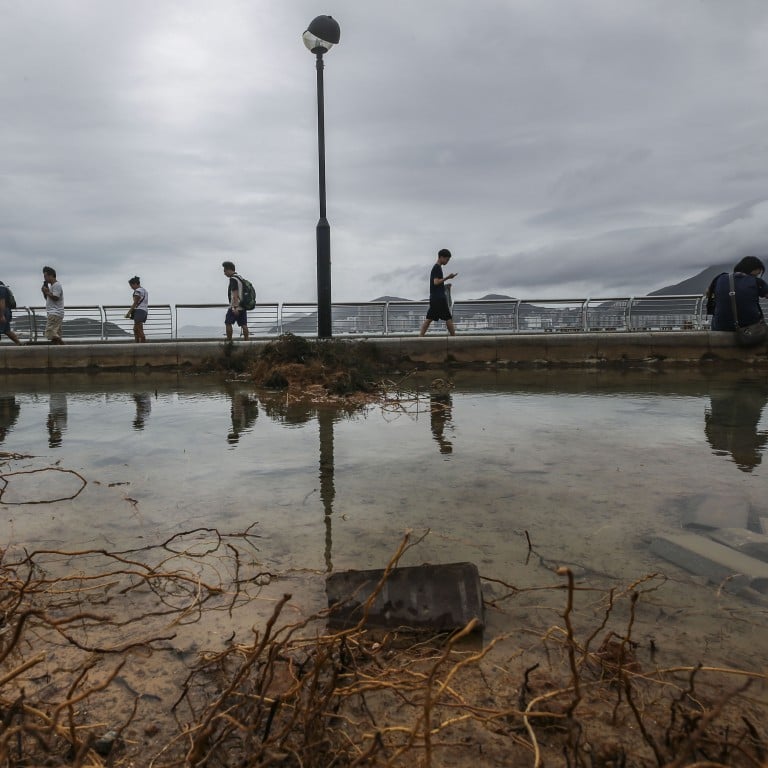
Rising sea levels could sink Hong Kong, yet we are still doing very little about it
- New reports warn that a 2-3-metre rise would wreak havoc, affecting over a quarter of the population
- As New York, Singapore and other vulnerable cities plan for such an eventuality, our government seems less concerned. It’s time to align with national plans and boost coastal defences
“It’s adapt or die,” they warn. “Unlike the heat, there is nowhere to hide from rising seas.”
The group contrasts Hong Kong’s policy inertia with detailed action plans in places like Singapore – which has budgeted around US$72 billion to reclaim islands, build barrages and create a new reservoir – and New York, which is taking action after it saw 90,000 homes inundated and 2 million people without power during Hurricane Sandy in 2012.

This would affect 22 per cent of the population – including almost 40 per cent of Kowloon residents. The West Kowloon Cultural District and Kai Tak redevelopment area are singled out as particularly vulnerable, along with residential areas like Tai Koo Shing and Whampoa Garden.
The group predicts that 80 per cent of water supplies, 100 per cent of power supplies and 50 per cent of sewage treatment facilities would be under threat. Half of the MTR’s 491 exits would be flooded and all of Hong Kong’s 78 ferry piers. Hong Kong Island would be cut off by flooding in cross harbour-tunnels, ferry links to our 22 outlying islands would be broken, and cross-border transport links severed.
The group calls for the creation of an interdepartmental Coastal Threat Defence Task Force, with coastal defences and sea walls at least 5-6 metres above current average sea levels. This would be comparable with Singapore’s plan for all reclaimed land to be at least 4 metres above sea level, and all critical infrastructure to be at least 5 metres above. It would also align Hong Kong with Shenzhen, which called for sea defences of at least 6-8 metres in the wake of the Typhoon Mangkhut catastrophe.
Such steps would additionally demonstrate that Hong Kong is committed to China’s National Climate Change Adaptation Strategy, which brings 17 ministries together to cooperate on a holistic plan intended to make China “climate resilient” by 2035.
Chao Qingchen, the director of China’s National Climate Centre, said at the unveiling of the strategy in June that natural disasters affect 300 million people across China every year, at an annual cost of more than U$44 billion. While noting that all of China’s “coastline megacities” face risks, Shanghai and Guangzhou are particularly vulnerable. There are specific plans to restore 50,000 coastal wetlands and 1,200km of shoreline.

But the fact that others are more vulnerable cannot justify the administration’s complacency. As the Live Science report concludes, “a key factor in determining whether a city will disappear is not necessarily sea level rise, but more the capacity of a city to address the problem”.
David Dodwell researches and writes about global, regional and Hong Kong challenges from a Hong Kong point of view


